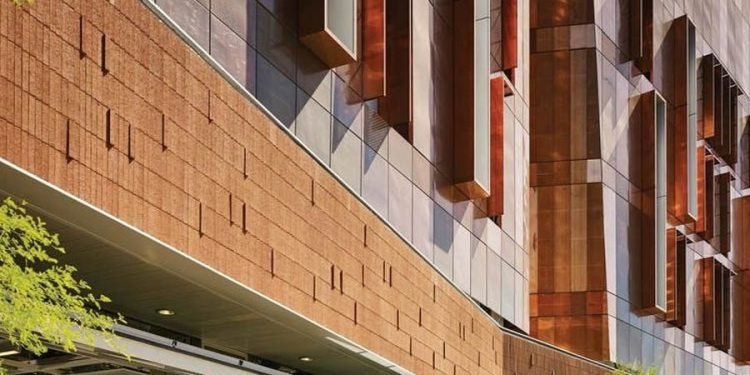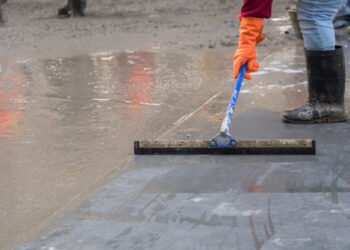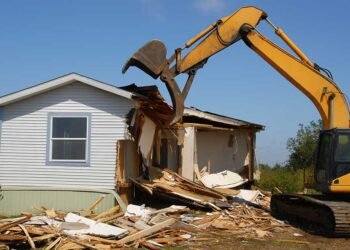The construction industry is constantly evolving, and building materials are no exception. Over the years, traditional building materials such as brick, concrete, and wood have been widely used in construction. However, with the advancement of technology, new materials, such as metal panels, have emerged as a popular alternative to traditional building materials.
This article will explore the differences between metal panels and traditional building materials, their advantages and disadvantages.
Insulated metal panels
As the demand for sustainable and energy-efficient building materials continues to rise, insulated metal panels have become a versatile and durable option for commercial and industrial construction projects. These panels have a rigid foam insulation core sandwiched between two metal sheets, providing excellent thermal insulation, structural integrity, and aesthetic appeal.
Advantages of insulated metal panels
Faster Construction Time
Insulated metal panels (IMPs) are prefabricated off-site, so they can be installed quickly and easily on-site. This helps to reduce construction time and labor costs. With IMPs, there is no need for a separate insulation layer, which further reduces the construction time. This makes insulated metal panels a better option for projects with tight deadlines requiring a quick turnaround.
Low Maintenance
IMPs require minimal maintenance because they resist moisture, pests, and damage. Unlike other materials, such as wood, which can rot or warp over time, IMPs are durable and long-lasting. This means that existing construction metal framed buildings installation require less maintenance and repair, which can save money over the life of the building.
Durability
IMPs are known for their strength and durability. The metal sheets used in IMPs are typically made from steel or aluminum, which are strong and resistant to damage. Additionally, the insulating foam core is made from materials resistant to moisture and mold growth, which helps prevent damage to the panels over time.
Energy Efficiency
IMPs are designed with an insulating foam core layer between two metal sheets which helps to keep the building’s interior temperature regulated. As a result, the building requires less energy to maintain a comfortable temperature, leading to significant energy cost savings over time.
Disadvantages of insulated metal panels
Higher Initial Cost
One of the main disadvantages of insulated metal panels is that they can be more expensive to install initially than traditional building materials. The panels’ cost can be higher than other options, and the installation process can require specialized tools and equipment. However, it is important to note that while the initial cost may be higher, long-term energy savings and reduced maintenance costs can help to offset this expense over time.
May Require Professional Installation
Insulated metal panels typically require professional installation to ensure they are installed correctly and safely. Improper installation can lead to issues such as air leaks, moisture problems, and structural issues. This may require additional costs for hiring a professional installer, which should be factored into the overall project budget.
Traditional Building Materials
The use of traditional building materials has been declining in recent years due to the availability of modern materials that are cheaper and easier to use. However, traditional building materials still have a significant role to play in the construction industry. Below are the advantages and disadvantages of traditional building materials
Advantages of traditional Building Materials
Lower initial cost
Another advantage of traditional building materials is their lower initial cost. While newer materials like concrete and steel can be more expensive, traditional materials like wood and brick are often more affordable. This can especially benefit homeowners and small businesses looking to build or renovate on a budget.
Ease of modification or expansion
Traditional building materials are also easier to modify or expand than newer materials. For example, suppose a homeowner wants to add an extra room to their house. In that case, using traditional materials like wood or brick may be easier and less expensive than more modern materials like concrete or steel. This can be especially beneficial for older buildings that need to be updated or expanded.
Disadvantages Of Traditional Building Materials
Higher maintenance cost
One of the most significant disadvantages of traditional building materials is their higher maintenance cost. Materials like wood, stone, and brick require regular maintenance to keep them in good condition. For example, wood must be sealed or painted every few years to prevent rot and decay.
Less durable
While traditional building materials are known for their durability, some materials may not be as long-lasting as newer materials. For example, wood can be susceptible to rot and decay over time, and some types of stone may be more prone to cracking and weathering. This can result in the need for more frequent repairs and maintenance.
To ensure the best performance and longevity of your building materials, it is advisable to consult with an insulation contractor who can provide expert guidance on the installation and maintenance of insulated metal panels.












